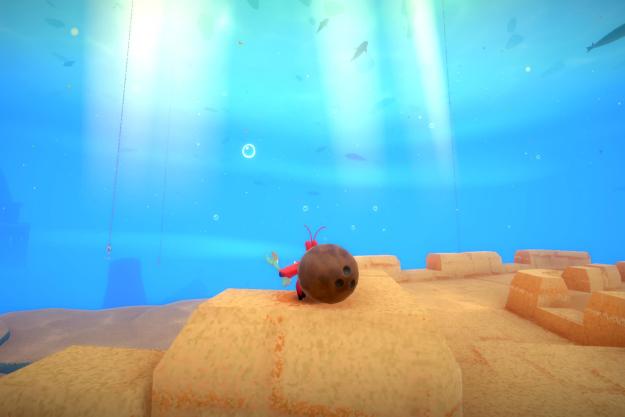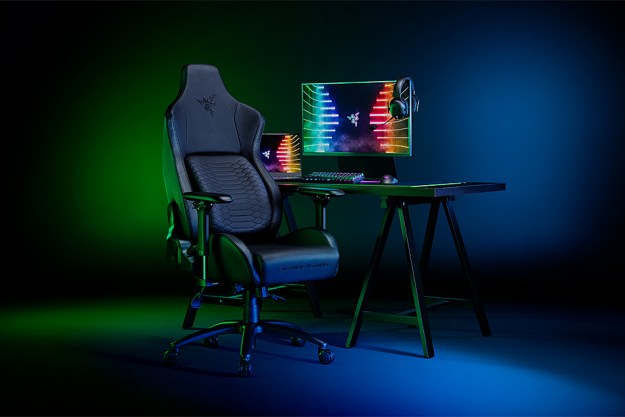In 2020, developer Shiny Shoe came out of left-field with a surprise hit called Monster Train. The Slay The Spire-inspired card game was unique in that it fused the idea of a deck-builder into that of a tower defense game. The hybrid genre premise turned out to be a stroke of genius, taking it out of Slay the Spire’s shadow and helping the studio make a name for itself.
Its follow-up game, Inkbound, is a little different. It’s a top-down, multiplayer roguelite set in a fantastical world. Though it doesn’t have cards, there’s one signature feature that makes it clear this is a Shiny Shoe production: It is another genre mosh pit. In addition to being a roguelite, it’s a tactics game that draws inspiration from MMO and MOBA combat. You might even confuse it for a Diablo-like dungeon crawler at first glance.
In a hands-off demo showcasing the game’s multiplayer, Shiny Shoe explained how the studio’s hybrid games came to be. Like Monster Train, Inkbound is the child of a heavily iterative process that sees Shiny Shoe borrowing from the games its team members love to make something that feels entirely new.
Get your quill ready
Inkbound looks familiar, but it’s complicated to explain. It’s a class-based game where up to four players team up and jump into a fantasy world where stories become reality. By hopping into the “inkwell,” they enter roguelike runs where they’ll collect upgrades, fight monsters, and choose a path through the world using their “quills.” Simple enough so far, right?
In true Shiny Shoe fashion, the game gets more creative in combat. When bumping into enemies, players enter a unique tactics experience. As enemies sit in place, players can run around the arena freely and unleash attacks. However, they have a mana bar with 10 ticks to spend (an interface that’s reminiscent of Hearthstone). Moving or executing moves will cost different amounts, so turns consist of trying to find a way to optimize attacks.

In the demo slice I saw, a developer controlled a barbarian-like Magma Miner who wields a big hammer. He could slam it down, hitting multiple enemies in an area if positioned right. His teammate was a Weaver, a more ranged-based class who could sit back and fling off spells from afar while the Maga Miner got in close. During the journey, both characters could “draft” abilities that can augment an attack or provide a party buff. While there’s no deck-building, you can feel a little bit of the studio’s card roots there.
If you’re trying to picture what battles look like, think something like Gears Tactics, where the action is more fast-paced despite technically being turn-based. But then also think of an MMO, where attacks are mapped to number keys and colorful circles line the ground to denote attack radius and buff fields.
Hybrid development
Shiny Shoe, a small studio, notes that several members on its team come from an MMO background. That detail begins to explain the studio’s chimera approach to game design, which gets taken to the next level in Inkbound. When I asked about how the studio pieced the game together, creative director Andrew Krausnick explained that it wasn’t so far off from the way Monster Train was developed.
“This game started as a lot of what you see. We actually had cards in it at some point, but it’s always been this combo MOBA/action RPG/tactics/character builder. I think it makes it easier to see and latch onto,” Krausnick tells Digital Trends. “In the case of Monster Train, we really liked this idea where you have a weak deck and you build to a strong deck. Other genres sort of do that in interesting ways, and it seems compelling to combine them. … At the very high level, we do start from that genre-hybrid approach and then, through the iterative process, we try out different pieces from those genres and see what works, because you almost can never tell.”

Shiny Shoe is able to utilize that approach so effectively due to how early it involves its community in its games. That allows the studio to treat genre as a problem-solving tool, using DNA from different games to address the friction its players are having early on.
“Something that’s really nice about the way we develop is that we do playtests constantly,” Krausnick says. “We do feedback constantly, we do really early alphas with external players. You dip into those genres, you pull out little pieces, you put them in, you see what works, you see what solves the problems you have and see what unique problems you have.”
While Inkbound is a far cry from Monster Train on paper, the same energy that made that game special is there. Shiny Shoe is taking a creative approach to the roguelike genre, which is sure to evolve through the game’s early access period. Based on the demo I saw, the foundation seems to be there. It’s just a matter of what tools Shiny Shoe uses to carve that marble.
Editors' Recommendations
- Inkbound is already changing the way I think about roguelikes
- Inkbound’s wildly powerful builds make it a 2023 rougelike to watch




